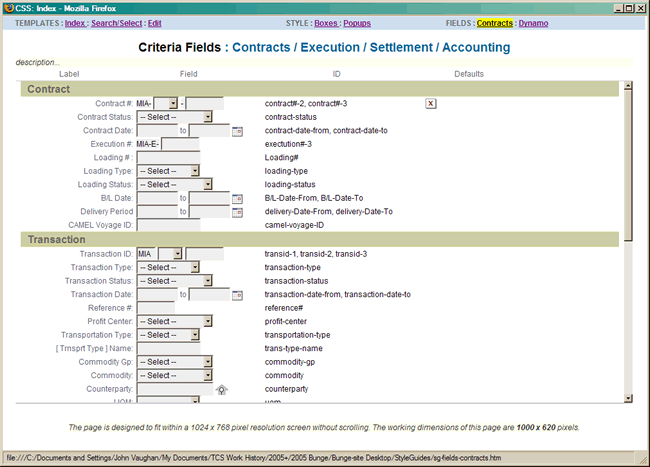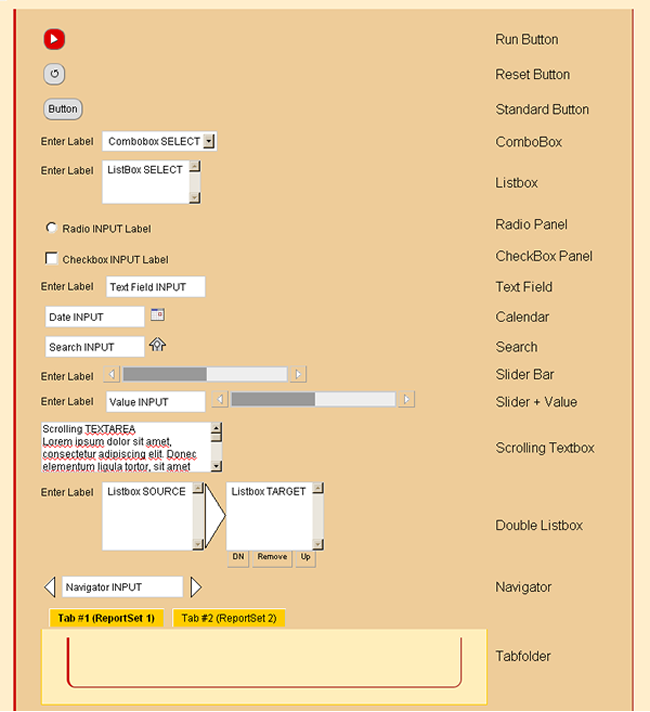Info Architecture
The "information architecture" infrastructure is how we establish a common interface to data entities that are shared across multiple applications within the enterprise. This is handled primarily though managagement of Cascading StyleSheets tags.
We also log and identify the HTML Form Elements (fields, forms and buttons) that appear with regularity.
Organized, self-evident
The development team can concentrate on creating usable code, rather than re-inventing the wheel.
The business team knows that business rules will be implemented with consistency.
The management stakeholders understand that we are presenting a common, branded, usable interface.
Cascading Stylesheets

In this example, we were working with a complex process that covered the Trading Contract process from initial record creation, through Execution, Settlement and Accounting.
Presentation Continuity
... is displayed and maintained in the Table:
- Form Element Label (consistent terminology)
- Type (s.a. text field, picklist)
- Size (s.a. Maximum # of Characters, pixel width)
- Identifier (s.a. CSS tag name or ID)
Business Rules
... are “embedded” in the HTML elements themselves:
- Default state (s.a pre-populating the field with appropriate data)
- Behaviors (s.a. "To" date cannot precede "From" date)
- whether the field is Required
- Support Tools (s.a. a Calendar or Picklist popup)
- Follow-thru Actions (s.a. Adding or Deleting an item)
View the case study in my portfolio: Bunge Global Markets
HTML Form Elements

In this example, we provided flexible, customizable styling for "control panel" form elements in a dynamic Design Environment.
View the case study in my portfolio: Information Builders Webfocus